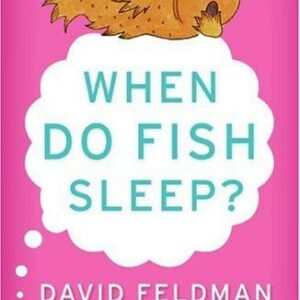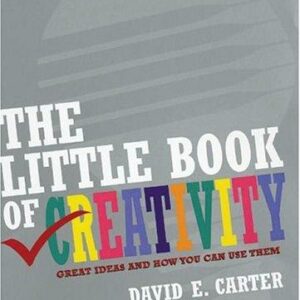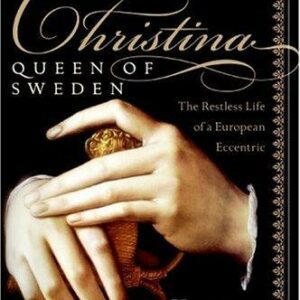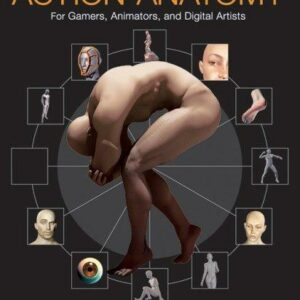The Passion of Artemisia
$17.00
| Title | Range | Discount |
|---|---|---|
| Trade Discount | 5 + | 25% |
- Description
- Additional information
Description
Description
“Susan Vreeland set a high standard with Girl in Hyacinth Blue…. The Passion of Artemisia is even better…. Vreeland’s unsentimental prose turns the factual Artemisia into a fictional heroine you won’t soon forget.” —People
A true-to-life novel of one of the few female post-Renaissance painters to achieve fame during her own era against great struggle. Artemisia Gentileschi led a remarkably “modern” life. Vreeland tells Artemisia’s captivating story, beginning with her public humiliation in a rape trial at the age of eighteen, and continuing through her father’s betrayal, her marriage of convenience, motherhood, and growing fame as an artist. Set against the glorious backdrops of Rome, Florence, Genoa, and Naples, inhabited by historical characters such as Galileo and Cosimo de’ Medici II, and filled with rich details about life as a seventeenth-century painter, Vreeland creates an inspiring story about one woman’s lifelong struggle to reconcile career and family, passion and genius.”A privileged glimpse into an extraordinary woman’s soul.”—Margaret George
“Lovely.”—The Atlantic Monthly
“Susan Vreeland set a high standard with Girl in Hyacinth Blue…. The Passion of Artemisia is even better…. Vreeland’s unsentimental prose turns the factual Artemisia into a fictional heroine you won’t soon forget.” —People
“Vreeland has burrowed deeply into the mind of the artist and produced a vivid cast of female characters.” —Vogue
“Vreeland’s remarkable ability to portray with lyricism and intelligence the life of the artist both at its most practical and most sublime makes this novel an accomplished work of art.” —San Francisco Chronicle
Susan Vreeland is the New York Times bestselling author of eight books, including Clara and Mr. Tiffany and Girl in Hyacinth Blue. She died in 2017.
INTRODUCTION
What would it take for a woman to be a famous painter in Baroque Italy? Talent. Passion. Determination. Good fortune. Artemisia Gentileschi had all but one.
In my previous novel, Girl in Hyacinth Blue, Magdalena, the fictional daughter of Johannes Vermeer, longed to paint. With the eye of an artist she imagined a painting of the moment of her father’s death, “but the task was too fearsome. She lacked the skill, and the one to teach her had never offered.”
But what if someone had offered? When I learned that a well known Italian Baroque painter, Orazio Gentileschi, did teach his daughter, Artemisia, I was fascinated. That she produced works of startling invention which took the Baroque spirit of exuberance to its height, that she expressed a feminist sensibility in painting strong heroines caught in moments of danger or tension, thinking and acting against the grain, that she was the first woman to be admitted into the Accademia dell’ Arte in Florence, the first woman to make her living solely by her brush—all this was more than I’d hoped for. And when I read that she had been raped at seventeen by her father’s friend and collaborator, her second teacher, I knew there was a story here.
Rather than focusing the story on the rape or using a broad brush to paint a sweeping biography, I chose to explore the inner Artemisia, her developing state of mind, her transcendence over misfortune and resentment, the possibilities of forgiveness and love in a ruptured life, and the connecting tissue of beauty, art, spirituality, and wholeness which allow her, finally, to tell her father, “We’ve been lucky. We’ve been able to live by what we love. And to live painting, as we have, wherever we have, is to live passion and imagination and connection and adoration, all the best of life—to be more alive than the rest.”
Inquiring into what state of mind is most propitious for creative work, Virginia Woolf asserts in A Room of One’s Own that “the mind of an artist, in order to achieve the prodigious effort of freeing whole and entire the work that is in him, must be incandescent, like Shakespeare’s mind.” She says of him, “All desire to protest, to preach, to proclaim an injury, to pay off a score, to make the world the witness of some hardship or grievance was fired out of him and consumed. Therefore his poetry flows from him free and unimpeded.”
But what of a woman who had plenty of reasons for grievance—rape, public scorn, torture by a papal court intending to cripple her talent, betrayal by a father who saw her as a novelty through which he could make money, the jealousy and indifference of a philandering husband? How was she to set it all aside so as to give birth, whole and unstained, to the work gestating in her? Or could the circumstances of her life serve a creative purpose? Could her passions be used, or must they be repressed in order to achieve a fragile satisfaction in her work? In post-Renaissance Italy, what would be required of a woman to keep that mind incandescent?
Those were the questions that intrigued me. I had to write a novel to find the answers.
Steeping myself in her cultural milieu, I wanted to translate the Baroque style of visual arts into storytelling. Just as Baroque figures are realistic individuals instead of ideal types, I pictured an Artemisia who has a thick neck, develops a double chin, has backaches, buys real boar sausage, screams in childbirth, swats her child, manages money poorly. In her world, a servant girl yearns to draw, a washerwoman sings arias, and a nun disobeys her order to adore the art of Rome. Just as the Baroque gives us scenes dramatically contrasting light and dark, I’ve drawn a woman torn by the vicissitudes of an uncertain life, going through dark times—slander, torture, heartbreak, grief—and experiencing extraordinarily bright periods—patronage by the Medici, the joy of motherhood, utter abandonment in love, and exuberance in the act of creation—any of which could suddenly darken. Happiness is never secure.
The Passion of Artemisia is fiction, which is to say, imagined conversations seamed together by pieces of days and nights, trivial as well as momentous actions, invented characters as well as actual people. Woolf says women’s history “has to be invented—both discovered and made up.” This is the process by which an historic figure moves from yellowed archives to academic interest and from scholarship to heroic popular legend, becoming more complex and beloved as a result. I wanted to participate in giving Artemisia her cultural moment, her own heroism. I was true to fact only so long as fact furnished believable drama, in the hope that what I produced would be concordant with the soul and passions of the real Artemisia Gentileschi, 1593-1653, for whom the story behind the art was always vital.
ABOUT SUSAN VREELAND
I graduated from San Diego State University, and have lived in San Diego since I was twelve (oh, how lucky I am—I am grateful every day), and in California since I was two. I have taught high school English in the San Diego Unified School System since 1969, and ceramics since 1986, retiring recently after a 30-year career. My student writing handbook, What English Teachers Want, [ISBN 0-88092-224-9] is used in high schools and community colleges in many states, and can be ordered from Royal Fireworks Press, (914) 726-4444; or your local bookstore.
I didn’t grow up longing to be a writer; in fact, the urge, strong as it is, is relatively recent. Concurrent with teaching, I began writing features for newspapers and magazines in 1980, taking up subjects in art, travel, education and skiing. I am married to a wonderful man, a software engineer who does my website. We live in San Diego, have no children, love to ski, take walks, visit museums, and travel, though we are too often embroiled in our work and are in a perennial struggle to make time for fun.
I turned to fiction to write What Love Sees. Published in 1988, it is the true story of Jean Treadway’s unwavering determination to lead a normal life despite blindness. To this end, she leaves her sheltered, wealthy New England home and marries Forrest Holly, also blind, a struggling rancher in a remote California mountain town. The book was made into a CBS television movie starring Richard Thomas and Annabeth Gish. Though currently out of print, it can be ordered in large print from amazon.com and unabridged audio tape from Recorded Books, ISBN 0-7887-0645-4, at 1-800-638-1304.
My short fiction has appeared in The Missouri Review, New England Review, Confrontation, Alaska Quarterly Review, Calyx,Crescent Review, So To Speak and other journals. I received Inkwell Magazine‘s Grand Prize for Fiction in 1999, and one of the stories in Girl in Hyacinth Blue has been nominated for The Pushcart Prize.
Here is a little essay, “The Balm of Creative Endeavor,” that Penguin asked me to write for their newsletter. I think it expresses who I am better than dry biographical facts.
“The Balm of Creative Endeavor”
Art, I am convinced, can emerge from extremity. In my case, long, uninterrupted days of treatment for lymphoma became a gift which resulted in Girl in Hyacinth Blue.
Wanting to fill my eyes and thoughts with beauty as I began chemotherapy, I pored over art books and absorbed the placidness of Monet’s garden, the sparkling color of the Impressionists, the strength and solidity of Michelangelo’s figures showing the titanic power of humans at one with God, Jan Vermeer’s serene Dutch women bathed in gorgeous honey-colored light. These women took on added significance because I had a Dutch name. It was comforting, in case I had to leave this world, to find, through them, my heritage and place of origin. My conviction grew that art was stronger than death.
Vermeer painted only 35 canvases. There could have been another, I reasoned, which survived neglect, mistreatment, theft, natural catastrophe. Survival was foremost in my thinking. I constructed in my mind another painting incorporating elements he frequently used. Imagining my way into the lives of the people who might have owned the painting through the centuries resulted in imagining my way out of my own dire circumstances. As the stories took shape, I thought less and less of what I was going through, and more and more of the characters, lives, settings and circumstances I was creating. Creative endeavor can aid healing because it lifts us out of self-absorption and gives us a goal. Mine was to live long enough to finish this set of stories that reflected my sensibilities, so that my writing group of twelve dear friends might be given these and remember me and be proud of me in some small way.
When I was hospitalized for a month for a bone marrow transplant, I hoped they’d give me a private room because I intended to read my manuscript aloud over and over to polish the sentences, and that would drive any roommate batty. Conscious that one’s thinking determines one’s experience, and in the spirit of Dag Hammaarskjold’s statement, “The only value of a life is its content for others,” I gathered uplifting quotes to put on the windowed door of my room, facing outward to benefit family and friends going to visit other seriously ill patients, and so doctors and nurses tending to me would have a positive thought right before they saw me. Quotes like Milton’s “The mind is its own place, and of itself can make a Heaven of Hell, or a Hell of Heaven,” and Shakespeare’s “There is nothing either good or bad but thinking makes it so,” vitalized me and readied me for writing.
I took my journal of affirmations, a big dictionary and a thesaurus, beautiful new nightgowns in bright silks and flowered satin, colorful earrings and scarves to wrap my bald head, CD’s of classical music, Gregorian chant, and Jessye Norman’s Spirituals in Concert including “That Great Gettin’ Up Morning” to help me rouse myself, and that moving “There is a Balm in Gilead.” And, of course, art books. These composed my “armor of enrichment” as I went to do battle with Goliath.
I put a little sign on my hospital window high above Los Angeles: “Every morning lean thine arms awhile upon the windowsill of heaven and gaze upon the Lord. Then, with the vision in thy heart, turn strong to meet thy day.” I wrote a love poem to my husband, and a Haiku series about my doctors and nurses. My Dutch characters became real to me and I loved them too. Nurses were amazed that I wasn’t experiencing the horrible side effects predicted. Three times a day they shined a flashlight in my mouth to look for bloody sores. None there, folks! I had filled my mouth with love and beauty instead.
When I came home, I found myself drinking in the simplest things—the blessing of a refreshing breeze, the velvet texture of newly cut grass, a small child’s lilting laughter. All the world seemed tender and rooted me in its loveliness. I embraced Henry James’s writing advice to be a person upon whom nothing is lost. After recovery, my little book about people who lived their defining moments in the presence of a beautiful painting, as I did, has launched me into a new and healthy life. I am humbled with gratitude.
A CONVERSATION WITH SUSAN VREELAND
Artemisia tells her own story in this novel. Why did you choose a first person narrator?
I felt using the first person would allow me to get closer to Artemisia. With the first person, it’s the reader’s assumption that all descriptions, observations, feelings are hers rather than the narrator’s. Not wanting a sense of a contemporary author looking back to that century, I felt the first person could provide more immediacy. Also, a first person voice would help to distinguish The Passion of Artemisia from a biography.
What are the difficulties involved in writing a fictional story that is based on real facts?
First, one must find the story one wishes to tell buried in the known history. Then, one must be willing to risk criticism when that story requires departure from fact. Writing historically based fiction is first a matter of discovery, then focus, then selectivity.
A person’s real life involves a huge number of people, far too many to give focus to a novel. In order to avoid the narrative sprawl that would limit space for development of important characters, I had to eliminate Artemisia’s brothers, sons, and many of the people for whom she painted in order to reveal her relationships with her father, husband, and daughter more deeply.
Conversely, archival and published history often don’t record the relationships that are significant, so characters have to be invented to allow the subject to reveal intimate thoughts and feelings through interaction. For this purpose I invented the two nuns, her models, her neighbor, and Renata, her chambermaid.
Sometimes a fact conflicts with what an author needs a character to do. In truth, Artemisia was illiterate until midlife, her father considering it more important to teach her to paint than to read. In order to keep the nuns in the story while she was in Florence, I had to have her learn to read and write at the convent.
Another challenge is scenic and chronological accuracy. Clothing, food, currency, and transportation must all be researched in historical reference books. Still lifes and figure paintings helped with food and clothing. When dealing with locales as old and well known as Rome and Florence, I had to ascertain whether certain streets, architectural features, sculptures, and paintings were in the same place as they are today. Only a chance reference told me that the Scalinata, later dubbed the Spanish Steps, up to Santa Trinità dei Monti weren’t yet built at the time Artemisia climbed the Pincian Hill. With permission of the Mother Superior of the Convent of the Sacred Heart at Santa Trinità, I moved the time forward that Santa Trinità was a convent of nuns rather than a monastery for brethren.
Sometimes nothing can be depended upon other than being there. I stayed in the convent of Santa Trinità in Rome to understand its layout and feel its calm in a bustling city, and I climbed the bell tower in Florence not just to see the view Artemisia and Pietro would have seen, but to describe the stairwell. Those on-site experiences are the treat of research. In truth, all of the research was enjoyable for me because I felt it directing me and giving the book depth and authority.
A danger of fact-based fiction is the discovery of some detail so delectable that one is tempted to deflect the narrative direction in order to include it. One must resist. Fiction is about character, not research.
In the novel you vividly depict the challenges of life as a painter and as a woman in seventeenth-century Europe. How did you research these details? In what ways did you use your research on the real Artemisia Gentileschi to inform your portrayal of her character?
In A Room of One’s Own, Virginia Woolf posits that a hypothetical, gifted sister of Shakespeare, wishing to write but prevented from a broad education by limited reading and restricted interaction in the world of ideas, would have been laughed at and ultimately would have been driven to despair. Woolf concludes: “Any woman born with a great gift in the sixteenth century would certainly have gone crazed, shot herself, or ended her days in some lonely cottage outside the village, half witch, half wizard, feared and mocked at [sic].” It wasn’t difficult to move this imaginary gifted woman from the sixteenth century world of letters and theater to the seventeenth century world of paint and canvas. That process is the purview of the imagination.
Germaine Greer’s seminal work, The Obstacle Race: Fortunes of Women Painters and Their Work, (1979), lays down the difficulties female artists faced: competing obligations of marriage and motherhood; the restrictions against women seeking art training; male willingness to accept women’s painting only as a benign drawing-room recreation but not as a professional activity for monetary gain, which might put a woman in the public eye; and perceptions of women’s intellectual inability to tackle “serious,” large-scale historical, mythical, or biblical subjects. Except for the good fortune of being born to a fine painter anxious to make money off of his talented daughter, these are the same obstacles Artemisia faced. It is a mark of her genius that she turned each one to an advantage.
The actual trial record, as recorded in Mary Garrard’s work of art history, Artemisia Gentileschi: The Image of the Female Hero in Italian Baroque Art, not only gave me a vivid account of the trial and her own statements, but gave me her voice, as did a letter to Galileo and other letters to her patrons, usually concerning payment. Guided by Garrard’s scholarship, I surmised much about her attitudes and struggles directly from studying her paintings in comparison to paintings of the same subjects done by other painters of her time.
The rest is informed imagination.
Much of Artemisia’s story is affected by the mores of her time and yet she is entirely sympathetic to a twentieth-century audience. How did you achieve this balance?
Artemisia achieved our sympathies for herself. Just think of what she did: defied the papal court by refusing to recant her testimony that she’d been raped; rejected the man who, according to seventeenth-century Italian culture, would restore her respectability with a marriage of reparation; made demands upon her father; left her husband for her art, and took her daughter with her; attended court events at the Medici’s Pitti Palace without a husband or an escort; used her talent to give feminist interpretations of typical Baroque heroines; and ultimately supported herself by doing what she loved most in life. Any one of these actions would have made her sympathetic to a twentieth-century audience. Her perseverance and self-invention raised her to be a heroine of her own life composition. It’s amazing to me that she hasn’t been popularized as a feminist model before this.
Your first novel, Girl in Hyacinth Blue, focused on a Vermeer painting. The Passion of Artemisia is about another seventeenth-century painter. Are you drawn to artists from this century? Do you plan to write more novels that take place during this period?
In the case of Vermeer, his art drew me into his time period and his story. In the case of Artemisia, her story drew me to her art and time period. Both explorations have been rich with discovery of other art—painting, sculpture, architecture—and have opened my eyes to the bravery and charms of the Netherlands and the high drama of Italy.
Someday I would like to study the life and work of Judith Leyster, a Dutch painter and contemporary of Artemisia, with an eye to finding a story there. I had great fun in writing a humorous tale of two rustic Tuscans of the seventeenth century riding a donkey named Pellegrina to Rome, and using pecorino cheese to gain entrance to private collections of the world’s great art, including the Vatican. It will appear in my next book, a collection of stories on the arts and artists, most of whom are nineteenth- and early twentieth-century European painters, Manet to Modigliani, told from the point of view of someone peripheral to their artistic lives: Monet’s gardener at Giverny, the wet nurse for Berthe Morisot’s baby, the orphaned daughter of Modigliani, the son of Van Gogh’s postman in Arles, a boy who threw stones at Cezanne and his painting. I’m also working on a novel, Cedar Spirit, about the early twentieth-century Canadian painter, Emily Carr, a true original, whose work celebrates the British Columbian wilderness and its native populations and cultures. Her story allows me to explore issues of cross-cultural friendship, native spirituality, and the interrelatedness of nature, man, and God.
So, no. Regardless of how much I love the sixteenth and seventeenth centuries, I won’t limit myself to this time period, though most of the writing I see in my immediate future will be art-related. Art enriches my life too much to disregard all the possibilities it offers.
Do you have any favorite books or authors? Which ones have had a particularly powerful or formative effect on you as a writer?
I cherish certain parts of books by many authors and for a variety of reasons:
–For the ability to draw me into an unfamiliar world and make me care deeply about its people, for making a bland, socially inept bungler sympathetic and appealing, The Shipping News by Annie Proulx
–For lush sensuousness of scene under the cedar between innocent youth on the brink of the moral eruption of their heretofore unmarked lives, and for twists of plot, Snow Falling on Cedars by David Guterson
–For natural and transparent expression of emotion, Portrait of the Artist as a Young Man, by James Joyce
–For seemingly effortless, rolling description allowing me to see a moving, peopled landscape, All the Pretty Horses by Cormac McCarthy
–For the power to create loveable characters I want to throw my arms around, and honorable ones I want to emulate, To Kill a Mockingbird by Harper Lee
–For sophistication and complexity of narrative structure, for subtle connective tissue, and for sheer beauty of sentences, The Hours by Michael Cunningham
–For density, language, cumulative imagery, and new discoveries every time I read it, Hamlet
–And for the pure joy of storytelling, John Steinbeck.
Do you have a personal favorite among the many painters or paintings that you have seen and studied?
Of Johannes Vermeer’s paintings, the one I love the most has the most nondescript name, Portrait of a Young Girl, less known than its more flashy cousin, Girl with a Pearl Earring. Against a nearly black backdrop, she looks directly at the viewer over her left shoulder, a graceful drape on her head, a pale dove gray shawl around her shoulder. Such small Dutch portraits in exotic rather than traditional costume were called “tronies.” Her wide face glazed in subtle shadings has the smoothness of painted china. One feels that not only the skin is pure, but the young woman herself is pure. Her eyes set widely and her unimpassioned gaze seem to be saying, “It’s just me. This is who I am”—a simple statement of self-knowledge and contentment. The effect is spare and exquisite—a testament to Vermeer’s mastery, how he must have had to work to contain his adoration in order to execute his skill.
As soon as I write this, other paintings come to mind—Monet’s of his first wife, Camille, in a hillside of red poppies or in their garden; Manet’s Olympia that shocked Paris and intrigues me far more than Mona Lisa’s face; Renoir’s Girl with a Watering Can, rather too precious for some tastes, but entirely captivating to me; Gustav Klimt’s decorative paintings of The Kiss andThe Embrace, which sweep me away with their tenderness—how he tilts her head back….
Yet, if I must choose, I go back to Vermeer’s Young Girl, the face I held in my mind when I wrote his daughter’s story in Girl in Hyacinth Blue.
DISCUSSION QUESTIONS
The Sibille
My father walked beside me to give me courage, his palm touching gently the back laces of my bodice. In the low-angled glare already baking the paving stones of the piazza and the top of my head, the still shadow of the Inquisitor’s noose hanging above the Tor di Nona, the papal court, stretched grotesquely down the wall, its shape the outline of a tear.
“A brief unpleasantness, Artemisia,” my father said, looking straight ahead. “Just a little squeezing.”
He meant the sibille.
If, while my hands were bound, I gave again the same testimony as I had the previous weeks, they would know it was the truth and the trial would be over. Not my trial. I kept telling myself that: I was not on trial. Agostino Tassi was on trial.
The words of the indictment my father had sent to Pope Paul V rang in my ears: “Agostino Tassi deflowered my daughter Artemisia and did carnal actions by force many times, acts that brought grave and enormous damage to me, Orazio Gentileschi, painter and citizen of Rome, the poor plaintiff, so that I could not sell her painting talent for so high a price.”
I hadn’t wanted anyone to know. I wasn’t even going to tell him, but he heard me crying once and forced it out of me. There was that missing painting, too, one Agostino had admired, and so he charged him.
“How much squeezing?” I asked.
“It will be over quickly.”
I didn’t look at any faces in the crowd gathering at the entrance to the Tor. I already knew what they’d show-lewd curiosity, accusation, contempt. Instead, I looked at the yellow honeysuckle blooming against stucco walls the color of Roman ochre. Each color made the other more vibrant. Papa had taught me that.
“Fragrant blossoms,” beggars cried, offering them to women coming to hear the proceedings in the musty courtroom. Anything for a giulio. A cripple thrust into my hand a wilted bloom, rank with urine. He knew I was Artemisia Gentileschi. I dropped it on his misshapen knee.
My dry throat tightened as we entered the dark, humid Sala del Tribunale. Leaving Papa at the front row of benches, I stepped up two steps and took my usual seat opposite Agostino Tassi, my father’s friend and collaborator. My rapist. Leaning on his elbow, he didn’t move when I sat down. His black hair and beard were overgrown and wild. His face, more handsome than he deserved, had the color and hardness of a bronze sculpture.
Behind a table, the papal notary, a small man swathed in deep purple, was sharpening his quills with a knife, letting the shavings fall to the floor. A dusty beam of light from a high window fell on his hands and lightened the folds of his sleeve to lavender. “Fourteen, May, 1612,” the notary muttered as he wrote. Two months, and this was the first day he didn’t have a bored look on his face. The day I would be vindicated. I pressed my hands tight against my ribs.
The Illustrious Lord Hieronimo Felicio, Locumtenente of Rome appointed as judge and interrogator by His Holiness, swept in and sat on a raised chair, arranging his scarlet robes to be more voluminous. Papal functionaries were always posturing in public. Under his silk skull cap, his jowls sagged like overripe fruit. He was followed by a huge man with a shaved head whose shoulders bulged out of his sleeveless leather tunic-the Assistente di Tortura. A hot wave of fear rushed through me. With a flick of a finger the Lord High Locumtenente ordered him to draw a sheer curtain across the room separating us from Papa and the rabble crowded on benches on the other side. The curtain hadn’t been there before.
The Locumtenente scowled and his fierce black eyebrows joined, making a shadow. “You understand, Signorina Gentileschi, our purpose.” His voice was slick as linseed oil. “The Delphic sybils always told the truth.”
I remembered the Delphic sibyl on the ceiling of the Sistine Chapel. Michelangelo portrayed her as a powerful woman alarmed by what she sees. Papa and I had stood under it in silent awe, squeezing each other’s hands to contain our excitement. Maybe the sibille would only squeeze as hard as that.
“Likewise, the sibille is merely an instrument designed to bring truth to women’s lips. We will see whether you persist in what you have testified.” He squinted his goat’s eyes. “I wonder what tightening the cords might do to a painter’s ability to hold a brush-properly.” My stomach cramped. The Locumtenente turned to Agostino. “You are a painter too, Signor Tassi. Do you know what the sibille can do to a young girl’s fingers?”
Agostino didn’t even blink.
My fingers curled into fists. “What can it do? Tell me.”
The Assistente forced my hands flat and wound a long cord around the base of each finger, then tied my hands palm to palm at my wrists and ran the cord around each pair of fingers like a vine. He attached a monstrous wooden screw and turned it just enough for the cords to squeeze a little.
“What can it do?” I cried. I looked for Papa through the curtain. He was leaning forward pulling at his beard.
“Nothing,” the Locumtenente said. “It can do nothing, if you tell the truth.”
“It can’t cut off my fingers, can it?”
“That, signorina, is up to you.”
My fingers began to throb slightly. I looked at Papa. He gave me a reassuring nod.
“Tell us now, for I’m sure you see reason, have you had sexual relations with Geronimo the Modenese?”
“I don’t know anyone by that name.”
“With Pasquino Fiorentino?”
“I don’t know him either.”
“With Francesco Scarpellino?”
“The name means nothing to me.”
“With the cleric Artigenio?”
“I tell you, no. I don’t know these men.”
“That’s a lie. She lies. She wants to discredit me to take my commissions,” Agostino said.
“She’s an insatiable whore.”
I couldn’t believe my ears.
“No,” Papa bellowed. “He’s trying to pass her off as a whore to avoid the nozze di riparazione. He wants to ruin the Gentileschi name. He’s jealous.”
The Locumtenente ignored Papa and curled back his lip. “Have you had sexual relations with your father, Orazio Gentileschi?”
“I would spit if you had said that outside this courtroom,” I whispered.
“Tighten it!” the Locumtenente ordered.
The hideous screw creaked. I sucked in my breath. Rough cords scraped across the base of my fingers, burning. Murmurs beyond the curtain roared in my ears.
“Signorina Gentileschi, how old are you?”
“Eighteen.”
“Eighteen. Not so young that you don’t know you should not offend your interrogator. Let us resume. Have you had sexual relations with an orderly to Our Holy Father, the late Cosimo Quorli?”
“He . . . he tried, Your Excellency. Agostino Tassi brought him into the house. I fought him away. They had both been hounding me. Giving me lewd looks. Whispering suggestions.”
“For how long?”
“Many months. A year. I was barely seventeen when it started.”
“What kind of suggestions?”
“I don’t like to say.” The Locumtenente flashed a look at the Assistente, who moved toward me. “Suggestions of my hidden beauty. Cosimo Quorli threatened to boast about having me if I didn’t submit.”
“And did you submit?”
“No.”
“This same Cosimo Quorli reported to other orderlies of the Palazzo Apostolico that he was, in truth, your father, that your mother, Prudenzia Montone, had frequently encouraged him to visit her privately, whereupon she conceived.” He paused and scrutinized my face.
“You must admit you do have a resemblance. Has he, on any occasion, ever revealed this to you?”
“The claim is ludicrous. I must now defend my mother’s honor as well as mine against this mockery?”
It seemed enough to him that he had planted the idea. He cleared his throat and pretended to read some document.
“Did you not, on repeated occasions, engage in sexual relations willingly with Agostino Tassi?”
The room closed in. I held my breath.
The Assistente turned the screw.
I tightened all my muscles against it. The cords bit into my flesh. Rings of fire. Blood oozed between them in two places, three, all over. How could Papa let them? He didn’t tell me there would be blood. I sucked in air through my teeth. This was Agostino’s trial, not mine. How to make it stop? The truth.
“Not willingly. Agostino Tassi dishonored me. He raped me and violated my virginity.”
“When did this occur?”
“Last year. Just after Easter.”
“If a woman is raped, she must have done something to invite it. What were you doing?”
“Painting! In my bedchamber.” I squeezed shut my eyes to get out the words. “I was painting our housekeeper, Tuzia, and her baby as the Madonna and Child. She let him in. My father was away. She knew Agostino. He was my father’s friend. My father hired him to teach me perspective.”
“Why did you not cry out?”
“I couldn’t. He held a handkerchief over my mouth.”
“Did you not try to stop him?”
“I pulled his hair and scratched his face and . . . his member. I even threw a dagger at him.”
“A virtuous woman keeps a dagger in her bedchamber?”
My head was about to split. “A threatened woman does.”
“And after that occasion?”
“He came again, let in by Tuzia. He pushed himself on me . . . and in me.” Sweat trickled between my breasts.
“Did you resist?”
“I scratched and pushed him.”
“Did you always resist?”
I searched Agostino’s face. Immovable as a painting. “Say something.” Only two months ago he had said he loved me. “Agostino,” I pleaded. “Don’t let them do this.”
He looked down and dug dirt from his fingernails.
The Locumtenente turned to Agostino. “Do you wish to amend your claim of innocence?”
Agostino’s strong-featured face turned cold and ugly. I didn’t want to beg. Not him. Santa Maria, I prayed, don’t let me beg him.
“No,” he said. “She’s a whore just like her mother.”
“She thought she was betrothed!” Papa bellowed from beyond the curtain. “It was understood. He would marry her. A proper nozze di riparazione.”
The Locumtenente leaned toward me. “You haven’t answered the question, signora. The sibille can be made to cut off a finger.”
“It’s Agostino who’s on trial, not I. Let him be subjected to the sibille.”
“Tighten!”
Madre di Dio, let me faint before I scream. Blood streamed. My new white sleeve was soaked in red. Papa, make them stop. What was I to do? Tell them what they want? Lie? Say I’m a whore? That would only set Agostino free. Another turn. “Oh oh oh oh stop!” Was I screaming?
“For the love of God, stop!” Papa shouted and stood up.
The Locumtenente snapped his fingers to have him gagged. “God loves those, Signor Gentileschi, who tell the truth.” He leered at me. “Now tell me, and tell me truthfully, signorina, after the first time did you always resist?”
The room blurred. The world swirled out of control. The screw, my hands-there was nothing else. Pain so wicked I-I-Che Dio mi salvi-would the cords touch bone?-Che Santa Maria mi salvi-Gesu-Madre di Dio-make it stop. I had to tell.
“I tried to, but in the end, no. He promised he would marry me, and I . . . I believed him.” Dio mi salvi, stop it stop it stop it. “So I allowed him . . . against my desires . . . so he would keep his promise. What else could I do?”
My breath. I couldn’t get my breath.
“Enough. Adjourned until tomorrow.” He waved his hand in disgust and triumph. “All parties to be present.”
The sibille was loosened and removed.
Rage hissed through me. My hands trembled, and shook blood onto my skirt. Agostino lurched toward me, but the guards grabbed him to take him away. I wanted to wait until the crowd left, but a guard pushed me out with everyone else and I had to walk through hoots and jeers with bleeding hands. In the glare of the street, I felt something thrown at my back. I didn’t turn around to see what it was. Beside me, Papa offered me his handkerchief.
“I’d rather bleed.”
“Artemisia, take this.”
“You didn’t tell me what the sibille could do.” I passed him, and walked faster than he could. At home I shoved my clothing cassapanca behind my chamber door with my knees, and flung myself onto my bed and cried.
How could he have let this happen? How could he be so selfish? My dearest papa. All those happy times on the Via Appia-picnics with Mama listening for doves and Papa gathering sage to scrub into the floor. Papa wrapping his feet and mine in scrubbing cloths soaked in sage water, sliding to the rhythm of his love songs, his voice warbling on the high notes, waving his arms like a cypress in the wind until I laughed. That was my papa.
Was.
And all his stories about great paintings-sitting on my bed, letting me snuggle in his arms, slipping me some candied orange rind. Wonderful stories. Rebekah at the well at Nahor, her skin so clear that when she raised her chin to drink, you could see the water flowing down her throat. Cleopatra floating the Nile on a barge piled with fruit and flowers. Dana‘ and the golden shower, Bathsheba, Judith, sibyls, muses, saints-he made them all real. He had made me want to be a painter, let me trace the drawings in his great leather-bound Iconologia, taught me how to hold a brush when I was five, how to grind pigments and mix colors when I was ten. He gave me my very own grinding muller and marble slab. He gave me my life.
What if I could never paint again with these hands? What was the use in living then? The dagger was still under the bed. I didn’t have to live if the world became too cruel.
But there was my Judith to paint-if I could. More than ever I wanted to do that now.
Papa rattled the door. “Artemisia, let me in.”
“I don’t want to talk to you. You knew what the sibille could do.”
“I didn’t think-“
“S“, eh. You didn’t think.”
He wedged the door open and pushed the trunk out of the way. He brought in a bowl of water and cloths to clean my hands. I rolled away from him.
“Artemisia, permit me.”
“If Mama were still here she wouldn’t have let you allow it.”
“I didn’t realize. I-“
“She wouldn’t have wanted it public, like I didn’t.”
“In time, Artemisia, it won’t matter.”
“When a woman’s name is all she has, it matters.”
US
Additional information
Additional information
| Weight | 7.8 oz |
|---|---|
| Dimensions | 0.9000 × 4.5000 × 7.4000 in |
| Imprint | |
| Format | |
| ISBN-13 | |
| Author | |
| Audience | |
| BISAC | |
| Subjects | books fiction, art, french, romance book, historical fiction, art history, literary fiction, alternate history, romance novel, fiction books, WWII, romance novels, romantic novels, historical novels, historical fiction books, realistic fiction books, books historical fiction, historical fiction novels, best selling books for women, FIC041000, love, philosophy, england, historical, marriage, relationships, renaissance, arts, music, classic, romance, Literature, drama, fiction, mystery, Friendship, romance books, roman, novels, FIC014000, 21st century |











